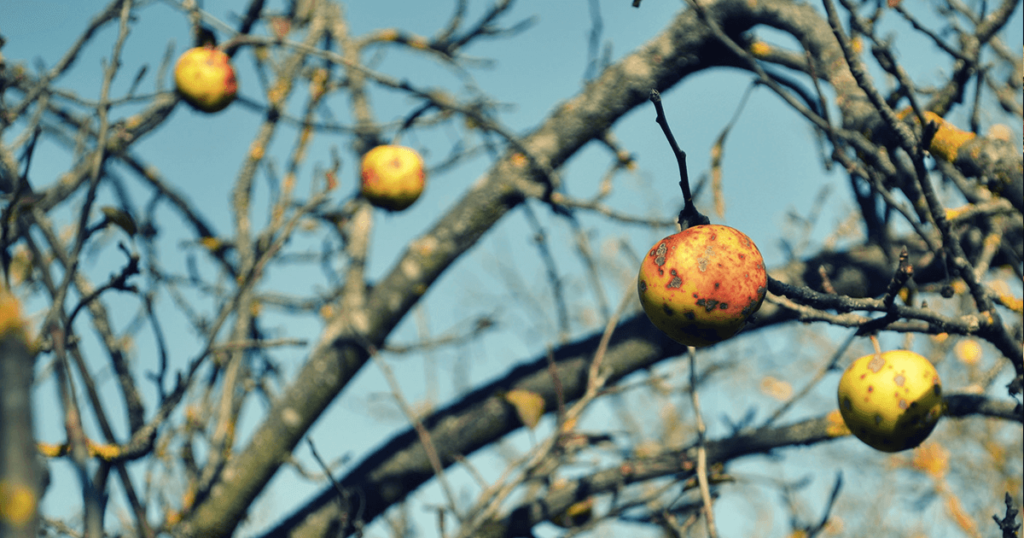
Gazing out my little bathroom window is a joy. Every morning, I can see sky (mostly gray) and an apple tree. As I lather, I like to think about picking the wild fruit, but the tree peeks out from behind a prickly, overgrown hedge. There are so many fences and hedgerows and stone walls here in Cambridge—each one offering outsiders a tantalizing glimpse of the treasures they protect.
Yesterday, on an early evening walk, I decided to turn left at a grove of trees, where normally I go straight. A quarter of a mile later, the path popped me out between a tilled field and the back of a row of modern brick duplexes. There was a deeply inset stream separating me from the back gardens, most of which were strewn with children’s toys and plastic lawn furniture. One, however, caught my attention, because the grass was covered with what looked like tennis balls. By now it was dusk, and it took me a moment to realize that I was looking at yellow apples raked into piles beneath a misshapen tree. At the far side of the garden was a wooden bench, but walking to it, through the apples, looked like an excellent way to sprain both ankles.
The tree was the focal point of the yard; the bench a place to admire it. The scene reminded me of the wild apples in Sherwood Anderson’s Winesburg, Ohio. They are delicious because “into a little round place at the side of the apple has been gathered all of its sweetness.” Not everyone knows about these twisted apples, but if you do, you run “from tree to tree over the frosted ground picking the gnarled, twisted apples and filling [your] pockets with them.”
Lately, the red apples outside my little bathroom window aren’t so vivid. Slowly they’ve turned orange, and now some of them are a gentle brown. A few have puckered back into the mass of leaves and branches. I don’t think anyone else has noticed this nearly hidden tree. Perhaps I should drag a picnic bench near it, so that my neighbors can fill their pockets with the twisted apples.
Reader’s Note: Every day for the next couple of weeks, we’ll be presenting new entries from “Along the River Cam.” Check here for the latest post.

